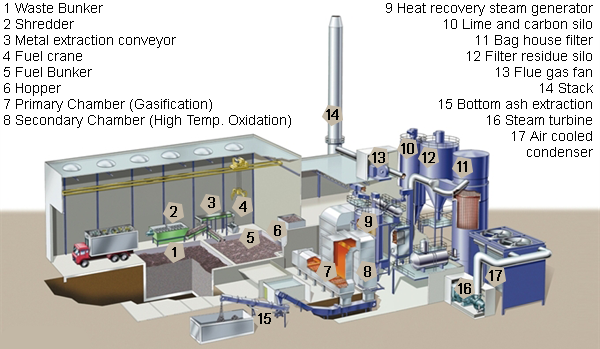waste to energy
Waste-to-energy or energy-from-waste is the process of generating energy in the form of electricity and/or heat from the incineration of waste. WtE is a form of energy recovery. Most WtE processes produce electricity and/or heat directly through combustion, or produce a combustible fuel commodity, such as methane, methanol, ethanol or synthetic fuels.
The method of using incineration to convert municipal solid waste (MSW) to energy is a relatively old method of WtE production. Incineration generally entails burning waste (residual MSW, commercial, industrial and RDF) to boil water which powers steam generators that make electric energy and heat to be used in homes, businesses, institutions and industries. One problem associated with incinerating MSW to make electrical energy, is the potential for pollutants to enter the atmosphere with the flue gases from the boiler. These pollutants can be acidic and in the 1980s were reported to cause environmental damage by turning rain into acid rain. Since then, the industry has removed this problem by the use of lime scrubbers and electro-static precipitators on smokestacks. By passing the smoke through the basic lime scrubbers, any acids that might be in the smoke are neutralized which prevents the acid from reaching the atmosphere and hurting the environment. Many other devices such as fabric filters, reactors and catalysts destroy or capture other regulated pollutants. According to the New York Times, modern incineration plants are so clean that "many times more dioxin is now released from home fireplaces and backyard barbecues than from incineration”. According to the German Environmental Ministry, "because of stringent regulations, waste incineration plants are no longer significant in terms of emissions of dioxins, dust, and heavy metals".

Copyright © 2014 www.ipsfzc.com - All Rights Reserved Design and Developed by SAMI AHMED